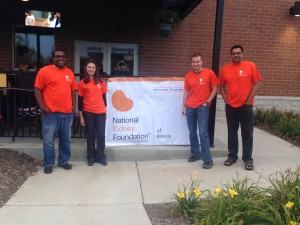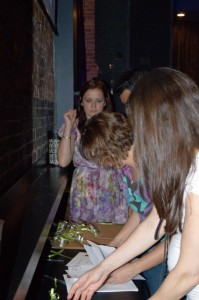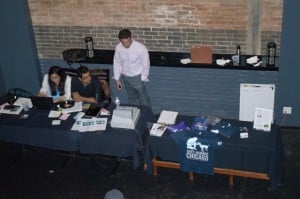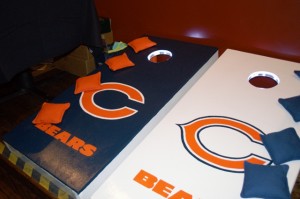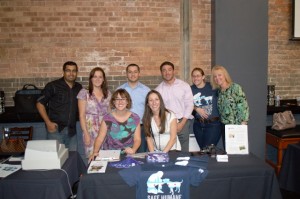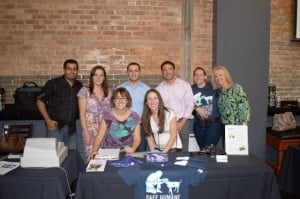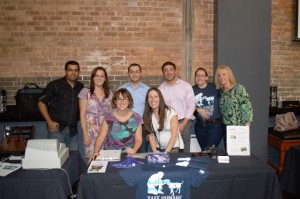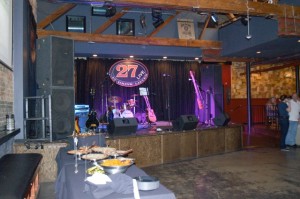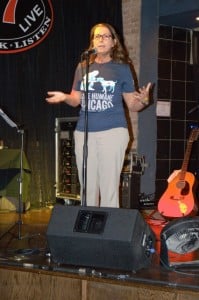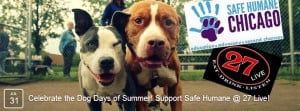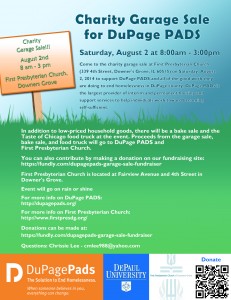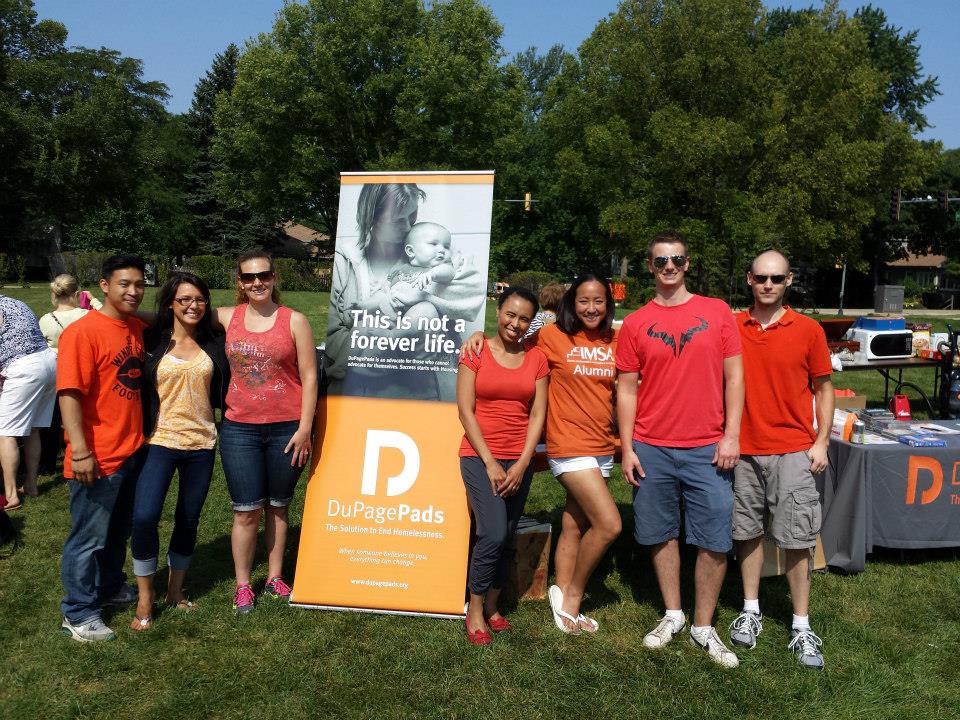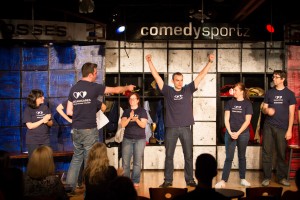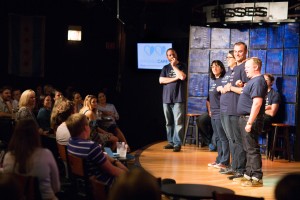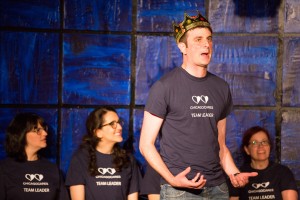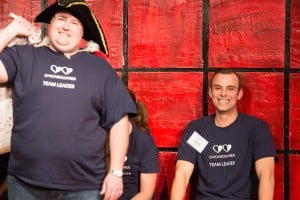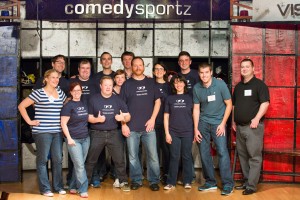
Project Description
We raised funds to support Canine Companions’ Dog Fest Walk n’ Roll, the signature fundraising event for the organization that takes place each year. Canine Companions for Independence (CCI) is a national, non-profit organization that enhances the lives of people with disabilities by providing highly trained assistance dogs and ongoing support to ensure quality partnerships.
We registered as a team to walk in the event under the team name “Blue Demons”. Following is a link to our team page: http://www.cci.org/faf/search/searchTeamPart.asp?ievent=1100605&lis=1&kntae1100605=D740F008D836481DAA76E914615DBB16&supId=0&team=6008549&cj=Y .
In addition to registering for the walk, to raise funds for our team, we hosted a “Rock n’ Roll for the Walk n’ Roll” event on the afternoon of July 27th at Party Animals, a dog-friendly venue in Chicago. At the event, we had a demonstration by CCI graduates, a live band, food, drinks, games, and a silent auction. To further promote CCI, we provided free T-shirts and Frisbees with the Walk’N Roll logo and our website to all attendees. We did not charge an entry fee; instead we focused on encouraging attendees to make donations. We promoted the event through our own social media avenues as well as by leveraging the social media network and website of Party Animals, our event venue, as well as that of CCI to expand our reach.
To fund the event, we started a Kickstarter campaign that generated over $2,000 to pay for expenses related to the event. We are also solicited donations from businesses to use as part of a silent auction to be held at the event.
Project Objectives and Methodologies Used
Our project objectives were three-fold:
1) Raise awareness and funds for Canine Companions
2) Apply the principles of project management covered in class
3) Have a good time
We were successful in raising awareness and funds for CCI, gathering a total of $3,800 in donations, successfully hosting an event attended by over 50 people, and distributing 100 CCI T-shirts and 200 CCI Frisbees. We also reached thousands of people through social media, making them aware of the work done by CCI and the upcoming Walk’N Roll event.
We were also successful in applying the principles of project management covered in class. We created a project proposal, a project implementation plan, and project risk management plan. These documents included specific tasks to be completed, timelines, risk analysis and contingencies, and budgets. Planning and putting on the event enabled each team member to apply project management leadership skills, respond to unexpected changes on the day of the event, and work with a diverse team for a common goal.
Most of all, we had a great time while supporting a worth-while cause. All of us learned more about the work done by CCI and now have an appreciation for how this organization changes the lives of individuals with disabilities. We worked hard as a team and approached the project seriously, but also took time to laugh and enjoy the experience.
Advice for Future Teams
Teams putting on fundraising events would be wise to do the following:
1) Use the project management tools. Projects with multiple work streams and deliverables benefit from the structure provided by project management tools. Taking the time to follow the process and complete each step is an investment in the overall success of your project. Attempts to save time by skipping steps will only result in greater risk to your project.
2) Take advantage of the individual skills of your team members. Our team was comprised of individuals with different skills and abilities. We used this to our advantage by leveraging these differences. The role of the project leader was assigned to someone with project management experience. The financial tracking was done by a team member with an accounting background. A team member with a relationship with CCI was our liaison with the organization. While we all worked on each aspect of the assignment, we benefited by recognizing our differences.
3) Get aligned on a common goal. While each of us made project proposals, once we landed on CCI as our charity and the Rock N’ Roll for the Walk’N Roll as the theme for the event, we moved forward as a unified group. That is not to say we did not have disagreements along the path. However, when issues arose, we were grounded by our focus on the common goal.
4) Do not be afraid to fail. While failure is always a possible outcome, it is not the inevitable outcome. We combined various ides of rising revenue using the traditional donation approach at the event combined with others. We used a silent auction, a photo booth, a game area and various online donation vectors to generate additional donations. There were times when the group did not want to take on the additional risk of having these events as it would take personnel and time to complete the gather of materials for each event. However we stood up to the challenge and combined all these activities to give our guests an entertaining time outside of the free food, free drinks and free rock band. We did not settle for less. We were not afraid to fail.
5) Work as a team, assign one leader and forgive. Our team is comprised of all leaders. We each have our own voice and opinion on completing tasks. We listened to each member and worked through the issues that arose by valuing each member in the team for being an equal contributor. Assign a leader to help drive the direction of the team that way it will limit the overall communication issues, by working with one project manager items and work streams organically combine to a successful project. The most important item is to forgive. Forgive yourself and others. When issues arise that prevent others from contributing, call them out on it and ask how the team can help with task or re-assign work. Forgive yourself for not being the leader and dedicating as much time to the project as others. Simply put not everyone has the ability to be an exceptional project manager; focus on the positives you can contribute and forgive your lesser skill set.
Lessons Learned about Project Management
1.) Successful project management is a team effort. As mentioned above, each of our team members played a different role and made unique contributions. Our collective thinking and effort made the project more successful than if any individual had undertaken the entire effort. This is true not only from a time and workload perspective, but also from the perspective of the diversity of thought gained by having a number of people contribute.
2.) Risk management is critical. All projects have risk. The more time you spend identifying them in advance and planning contingencies, the greater the likelihood of success. The more complex the project, the more important this becomes. By identifying the risks early on, we were able to be flexible if something did not go as planned. Invariably, something will go wrong with a project of any size and complexity. Planning ahead will enable you to achieve your goal regardless of individual challenges.
3.) Early planning and communication will save time and effort in the long run. There is often a tendency for teams to want to jump into the tasks associated with a project rather than spend time planning. Staying in the planning phase longer than what might feel comfortable will benefit the team and the project in the long run. Early on, some of our team calls seemed to take longer than necessary as we discussed various aspects of the project. Allowing each time member the time to get their questions answered helped ensure we were aligned so we could move forward as one.
4.) Numbers do not mean everything. Metrics are great, but they do not measure the entire impact. Of course our team reported the donations generated, and the costs associated with the events. But the items that we did not report on truly makes ours project the most successful. From our event we inspired some of the guests of our event to host a fundraiser for CCI on their own accord. We donated a substantial amount of our t-shirts, Frisbees and other accessories to the group so that they could host another event for the charity. There is no metric for this. The amount of publicity and awareness raised by a single event is hard to calculate and understand the impact from the event, however the ripple effect made from this project will have a much farther reaching effect for the charity and its mission. Therefore while numbers and metrics are important, it is also important to include in the report out the soft topics and items as it will have an impact that may not always be seen in the bottom line.
